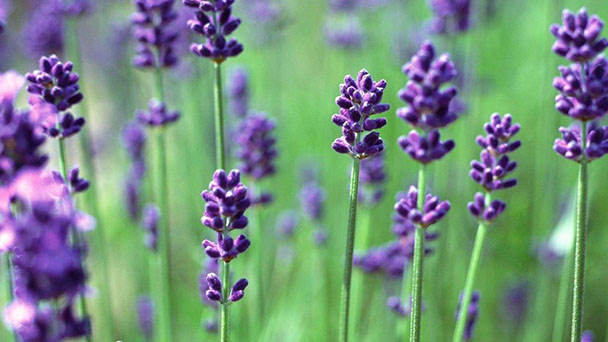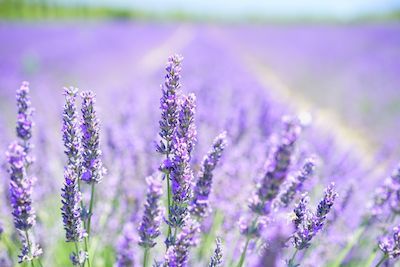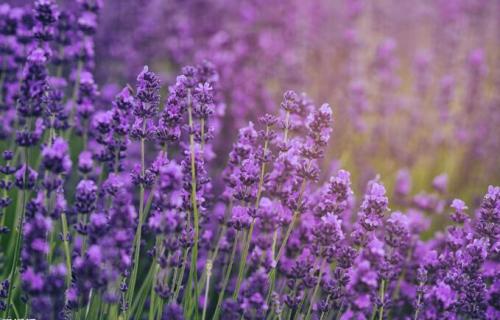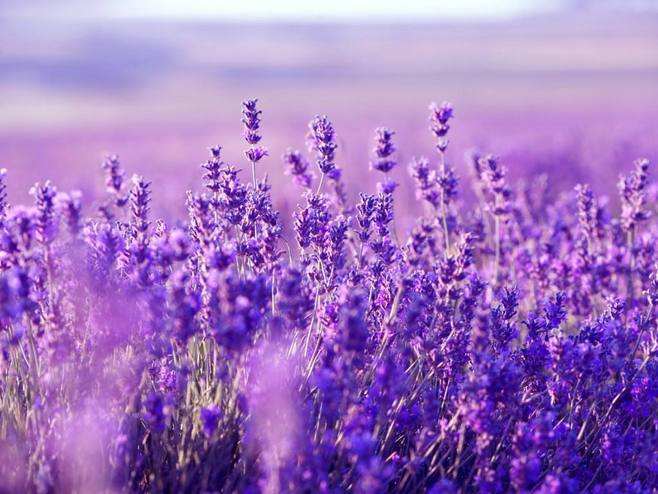Lavandula profile
Written by Maggie
Nov 23 2020

Lavandula is native to the Mediterranean coast, all over Europe and the Islands of Oceania. It was widely grown in Britain and Yugoslavia.Lavandula, with its elegant leaves and beautiful blue-purple glumes, and a new perennial hardy flower in the garden. It is suitable for flowers in clusters or strips. It can also be potted for viewing. Lavandula was a fairly common herb in Roman times and was known as the "after vanilla" because of its most potent properties. Since ancient times, it has been widely used in medical treatment. Stems and leaves can be used as medicine, with the effect of strengthening the stomach, sweating and pain relief. It is a good medicine for treating colds, colds, abdominal pain and eczema.
Lavandula picture

Morphological characteristics of Lavandula
The Lavandula is a perennial herb or dwarf shrub that although called a grass, it is actually a small purple and blue flower. Lavandula is fascicular, much branched, common upright growing. The plant height varies from 30 to 40 cm, 45 to 90 cm, and can grow up to 1 m per plant in mountainous areas at relatively high altitudes. Leaves are alternate, elliptic, apiculate, or needle - shaped, margin inversely curving. Spikes are terminal, 15 -- 25 cm long. Corolla is lower tubular, upper lip shaped, upper lip 2-lobed, lower lip 3-lobed. The flowers are about 1.2cm long, with blue, deep purple, pink, white and other colors, commonly purple and blue. The flowering period is from June to August. The whole plant is slightly sweet wood light aroma, because the flowers, leaves and stems of the villi are all hidden oil glands, gently touch the oil glands that burst and release the fragrance.
Lavandula growth habits
Lavandula is highly adaptable. Adult plants are resistant to both low and high temperatures. In the harvest season it can withstand high temperatures of 40℃ or so. In Huanglong area of Shaanxi province, lavender plants were kept at -21℃ in winter. In Xinjiang region, the buried soil treatment, snow cover can withstand low temperatures of -37℃. Seedlings can tolerate low temperatures of -10℃. During the growth and development of Lavandula in the following year, the average temperature was around 8℃. It takes 10 to 15 days to germinate.The average temperature was 12~15℃, and it took 20 days for the branches to turn green. The average temperature is between 16 ℃ and 18℃. It takes 25 to 30 days to start a budding. The average temperature was 20~22℃, and the flowers began to bloom.The average temperature is 26~32℃, which is the fruiting period.
Lavandula has a well-developed root system and prefers rich silica-calcium rich fertile soil with deep, loose, well ventilated soil. Soil with strong acidity or alkalinity and plots with heavy viscosity, poor drainage or high water table are not suitable for planting.

Lavandula geographical distribution
[Domestic distribution] After 10 years of careful cultivation of Yili people in Xinjiang, Lavandula formed a scale at the foot of Tianshan Mountain along the Yili River. Xinjiang Yili Kazakh Autonomous Prefecture in the heart of the Tianshan Mountains is the main base for the cultivation and processing of Lavandula in China and the largest spice production base in Asia.
Lavandula was born in France and Italy south of the Mediterranean coast of the Southern Foothills of the Alps, as well as Spain, North Africa and other places. In the 13th century, it was the main plant in the gardens of European medical monasteries. In the 15th century, it was planted in the Haile area. It was cultivated in southern France in the late 16th century. In the 18th century, The hills around Meech in Surrey, Xunyi Hill in South London, Provence in France and Grasse were all famous for growing Lavandula and became world famous tourist attractions. In the 19th century, Britain, Australia, the United States, Hungary, Bulgaria, Russia, Japan and other countries were introduced and cultivated, now throughout the Mediterranean and the Black Sea coastal countries.
The way Lavandula breeds
The propagation methods of Lavandula mainly include sowing, cutting, layering and root splitting, mainly using cutting and sowing methods.

The main use of Lavandula
1. Extraction of essential oil: From the perspective of clinical application, Lavandula essential oil can relieve nerves, make people feel happy and nourish, and has the magical effect of calming the mind and promoting sleep.
2. For ornamental use: Lavandula has a wide variety of plants, which are of high ecological ornamental value. Its plant is low, and the whole plant four seasons are gray purple, strong growth, resistant to pruning, leaf shape beautiful color, noble and elegant. It can be used to build a Lavandula special aromatic botanical garden to make it green, beautiful, colorful and fragrant.
3. Medicinally: Lavandula has been widely used in herbology. Lavandula oil is said to relieve and cure insect bites, while Lavandula flowers repel insects.
Latest Updated
- Benefits of Bugleweed - 7 Science-backed Health Benefits
- Bugleweed Dangers & Side Effects - Is It Poisonous?
- How to Plant Evergreen Trees - What You Should Know
- When to Plant Evergreens - Grow Guide for Evergreen Trees
- 12 Wonderful Evergreen Shrubs for Your Garden
- 12 Popular Evergreen Plants with Pictures for Beginners
- When And How To Prune A Lilac Bush Like a Pro
- How to Grow & Care for Lilac Vine (Hardenbergia Violacea)
- Japanese Lilac Tree (Syringa Reticulata) Care & Propagation Guide
- Shumard Oak Pros and Cons - What to Know
Popular Articles
- Winter maintenance of Antirrhinum Majus
- How to Grow Terminalia Mantaly Tree
- How to Grow and Care for Crossostephium Chinense
- How to grow Antirrhinum Majus in spring
- Peristeria Elata (Dove Orchid) Profile: Info & Care Guide
- Underwatered Snake Plant (Sansevieria Trifasciata) - Signs And How To Fix
- How to Care for Brazilian Jasmine Plant (Mandevilla Sanderi)
- How to Grow & Care for Graptopetalum Purple Delight in Summer
- Rosa Chinensis (China Rose): Plant Growing & Care Tips
- How to Care for Baby Sun Rose (Aptenia Cordifolia)